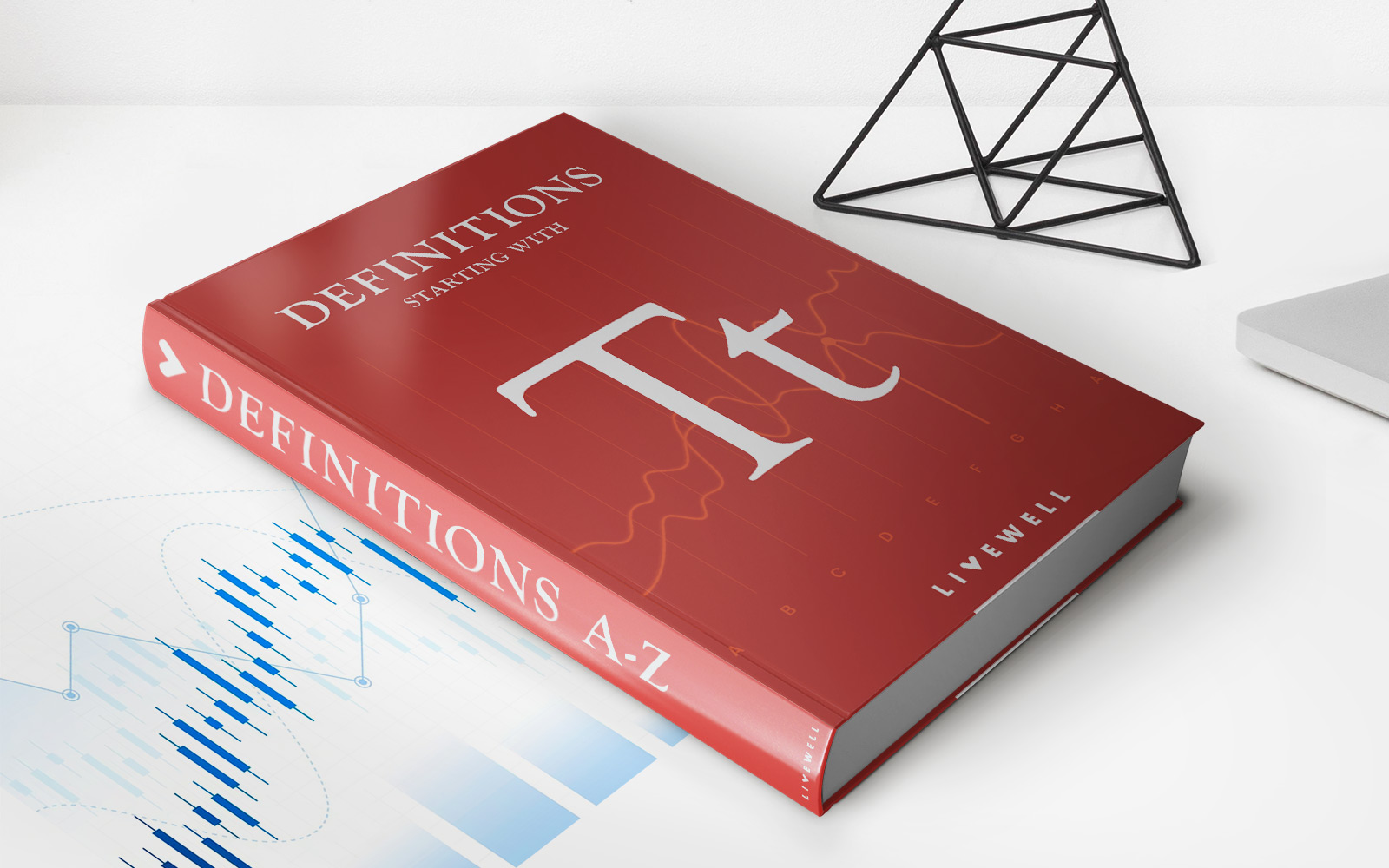

Finance
What Are Employee Tax Deductions?
Modified: February 21, 2024
Learn about employee tax deductions and how they can help you save money on your finances. Discover the various deductions available to employees and maximize your tax savings.
(Many of the links in this article redirect to a specific reviewed product. Your purchase of these products through affiliate links helps to generate commission for LiveWell, at no extra cost. Learn more)
Table of Contents
- Introduction
- Overview of Employee Tax Deductions
- Common Employee Tax Deductions
- Deductions for Business Expenses
- Deductions for Work-Related Education
- Deductions for Health Insurance Premiums
- Deductions for Retirement Contributions
- Deductions for Charitable Contributions
- Deductions for Home Office Expenses
- Deductions for Vehicle Expenses
- Other Employee Tax Deductions
- Conclusion
Introduction
When it comes to managing personal finances, understanding tax deductions can significantly impact an individual’s financial well-being. One area where tax deductions play a vital role is in employee compensation. Employers often offer various deductions to their employees, allowing them to reduce their taxable income and save money.
In this article, we will explore the concept of employee tax deductions and provide an overview of the most common deductions that employees can take advantage of. From business expenses to charitable contributions, we will delve into the different categories of deductions that can help employees maximize their tax savings.
Understanding employee tax deductions is crucial for both employees and employers. For employees, these deductions can have a significant impact on their financial situation by reducing their tax liability. Employers, on the other hand, can attract and retain talented employees by offering valuable deductions as part of their compensation packages.
It’s important to note that while tax deductions can provide financial benefits, it’s essential to follow the tax laws and regulations set by the government. Consulting with a tax professional or utilizing tax software can ensure that all deductions are properly claimed and reported.
Now, let’s explore the world of employee tax deductions and discover the various ways employees can leverage them to improve their financial position.
Overview of Employee Tax Deductions
Employee tax deductions refer to specific expenses that employees can deduct from their taxable income, reducing the amount of income tax they owe to the government. These deductions are allowed by the tax code to incentivize certain behaviors, such as investing in education, saving for retirement, or supporting charitable causes.
Employee tax deductions are typically categorized as either “above-the-line” or “below-the-line” deductions. Above-the-line deductions, also known as “adjustments to income,” are deducted before calculating the adjusted gross income (AGI). Below-the-line deductions, or itemized deductions, are subtracted from the AGI to determine the taxable income.
Above-the-line deductions are beneficial because they directly reduce the AGI, impacting other calculations like eligibility for certain tax credits and deductions. Common above-the-line deductions include contributions to retirement accounts, health savings accounts (HSAs), self-employed health insurance premiums, and student loan interest payments.
Below-the-line deductions, on the other hand, are more commonly used by taxpayers who have higher expenses that exceed the standard deduction. Some of these deductions can include unreimbursed business expenses, medical expenses, mortgage interest, and charitable contributions.
It’s important to note that employees can choose between claiming the standard deduction or itemizing deductions. The standard deduction is a fixed amount determined by the Internal Revenue Service (IRS) and is adjusted annually. Itemizing deductions, on the other hand, involves listing out and totaling individual deductible expenses. Employees should calculate which method is more advantageous based on their individual circumstances.
Employee tax deductions can provide significant savings for individuals and families. By carefully tracking and documenting eligible expenses, employees can ensure they take full advantage of available deductions. However, it’s essential to understand the specific guidelines and requirements for each deduction in order to comply with tax laws and regulations.
In the following sections, we will explore some of the most common employee tax deductions, including deductions for business expenses, work-related education, health insurance premiums, retirement contributions, charitable contributions, home office expenses, and vehicle expenses. Understanding these deductions will empower employees to make informed financial decisions and maximize their tax savings.
Common Employee Tax Deductions
Employee tax deductions come in various forms and can significantly affect an individual’s taxable income. Understanding the most common deductions can help employees make informed financial decisions and optimize their tax savings. Let’s explore some of the most frequently claimed deductions.
1. Business Expenses: Employees who incur expenses directly related to their job may be eligible to deduct these expenses. This can include travel expenses, professional development or training costs, and office supplies. To qualify for this deduction, the expenses must be necessary for the employee to perform their job duties and not reimbursed by their employer.
2. Work-Related Education: Employees who pursue education or training that directly relates to their current job or helps improve their skills may be able to deduct certain educational expenses. This can include tuition, books, and supplies. However, the education must be required by the employer or by law in order to qualify for the deduction.
3. Health Insurance Premiums: Employees who pay for their own health insurance premiums may be eligible to deduct these expenses. This deduction is especially valuable for self-employed individuals or those whose employer does not offer health insurance coverage.
4. Retirement Contributions: Contributions to retirement plans, such as a 401(k) or traditional IRA, are tax-deductible. These deductions lower the employee’s taxable income, allowing them to save for retirement while also reducing their tax liability.
5. Charitable Contributions: When employees make donations to eligible charitable organizations, they can deduct these contributions from their taxable income. This deduction provides an incentive for employees to support causes they care about while reducing their tax liability.
6. Home Office Expenses: Employees who work from home may be eligible to deduct certain expenses related to their home office, such as a portion of rent or mortgage interest, utilities, and internet expenses. To qualify for this deduction, the home office must be used exclusively for work purposes and meet specific IRS criteria.
7. Vehicle Expenses: Employees who use their personal vehicles for work-related purposes, such as business travel or commuting to multiple job sites, may be able to deduct certain vehicle-related expenses. This can include mileage, fuel costs, maintenance, and insurance. Proper documentation must be kept to support these deductions.
These are just a few examples of common employee tax deductions. It’s important for employees to research and understand the specific requirements and limitations for each deduction they plan to claim. Consulting with a tax professional can provide valuable guidance and ensure compliance with tax laws and regulations.
By taking advantage of these deductions, employees can lower their tax burden and potentially increase their financial well-being. It’s crucial to keep accurate records and receipts to support any deductions claimed and to stay informed of any changes in tax laws that may impact the eligibility for certain deductions.
Deductions for Business Expenses
One of the most common deductions that employees can claim on their taxes is for business expenses. These expenses are incurred when an employee spends money on items or services directly related to their job. By deducting these expenses, employees can lower their taxable income and potentially reduce their tax liability. Let’s explore the key details about deductions for business expenses.
Firstly, it’s important to note that only business expenses that are necessary and ordinary can be deducted. Necessary expenses are those that are helpful and appropriate for the employee’s business, while ordinary expenses are common and accepted in their industry. It’s crucial to maintain accurate records and receipts for all business expenses to support the deduction claimed.
Common types of deductible business expenses for employees include:
- Travel Expenses: Employees may deduct expenses related to business travel, such as transportation (airfare, train fares, or car rentals), accommodation, meals, and parking fees. However, expenses considered lavish or extravagant may not be eligible for deduction.
- Professional Development and Continuing Education: Expenses incurred for job-related training, conferences, workshops, and seminars are deductible. This can include registration fees, course materials, travel expenses, and lodging.
- Office Supplies and Equipment: Any expenses related to purchasing office supplies, such as pens, paper, printers, and computers, can be deducted. Larger equipment purchases, such as laptops or desks, may need to be depreciated over time.
- Business Use of Home: If an employee uses a designated area of their home exclusively for business purposes, they may be able to deduct a portion of their home-related expenses, such as rent or mortgage interest, utilities, and internet bills.
- Work-Related Meals and Entertainment: Expenses incurred for business-related meals and entertainment, such as client lunches or networking events, can be partially deductible. Generally, only 50% of these costs can be claimed as a deduction.
- Uniforms and Work Clothing: If an employee is required to wear specific uniforms or protective clothing for their job, the expenses associated with purchasing and maintaining these items may be deductible.
It’s important to remember that business expenses must be directly related to the employee’s job and not reimbursed by their employer to be eligible for deduction. Employees should keep thorough documentation, including receipts and invoices, to substantiate their claim.
Furthermore, employees who are self-employed or work as independent contractors may be eligible for additional deductions related to their business. These can include deductions for home office expenses, self-employment taxes, business insurance premiums, and more. Self-employed individuals should consult with a tax professional to ensure they are taking advantage of all available deductions.
By understanding and properly claiming deductions for business expenses, employees can effectively reduce their taxable income and potentially increase their tax refunds or decrease any balance due. It’s crucial to stay informed about the ever-changing tax laws and consult with a tax professional to maximize deductions and comply with all tax regulations.
Deductions for Work-Related Education
Continuous learning and professional development are essential for individuals looking to advance in their careers. Fortunately, the expenses associated with work-related education can often be deducted from an employee’s taxable income. These deductions not only encourage employees to enhance their skills but also provide financial incentives for investing in their education. Let’s explore the key details about deductions for work-related education.
To be eligible for a deduction, work-related education expenses must meet certain criteria. The education must be related to the employee’s current job or improve their skills in their current position. Additionally, it must meet at least one of the following requirements:
- Required by Employer: If the education is required by the employer in order to keep or maintain the employee’s current job, the expenses may be deductible. This requirement can include specific courses or degrees necessary for the employee’s role.
- Legal Requirement: If the education is necessary to meet the legal requirements of the employee’s current job, such as obtaining and maintaining a professional license or certification, the expenses can be deducted.
- Improvement of Skills: If the education is undertaken to improve or enhance skills in the employee’s current job, the expenses may be deductible. This can include workshops, seminars, conferences, or courses directly related to the employee’s field of work.
It’s important to note that work-related education expenses are only tax-deductible if they are not reimbursed by the employer or a third party. If the employer provides reimbursement for education expenses, the employee may not be able to claim the deduction.
The types of expenses that can be deducted for work-related education include:
- Tuition and Fees: The cost of tuition and fees for the educational program or course is a deductible expense. This can include both traditional in-person education as well as online courses.
- Books and Supplies: Expenses for books, supplies, and required course materials can be deducted.
- Transportation and Travel: If travel expenses, such as transportation and lodging, are necessary to attend the educational program or course, they may be deductible.
It’s essential to keep detailed records and documentation for all work-related education expenses. This includes receipts, invoices, course syllabi, and any other supporting documents that can substantiate the deduction claimed.
It’s worth noting that work-related education expenses should not be confused with education expenses that qualify for other tax breaks, such as the Lifetime Learning Credit or the American Opportunity Credit. Employees should explore these options separately to determine which tax benefit is more advantageous for their situation.
By taking advantage of deductions for work-related education, employees can not only enhance their skills and knowledge but also reduce their taxable income. It’s recommended to consult with a tax professional or utilize tax software to ensure that all requirements are met and that accurate deductions are claimed.
Deductions for Health Insurance Premiums
One of the major expenses that employees often face is health insurance premiums. Fortunately, certain employees may be eligible to deduct their health insurance premiums from their taxable income, reducing their overall tax liability. These deductions can provide valuable cost savings while ensuring individuals have access to essential healthcare coverage. Let’s explore the key details about deductions for health insurance premiums.
Firstly, it’s important to note that health insurance premium deductions are typically available to self-employed individuals or those who don’t have access to employer-sponsored health insurance plans. Employees who receive health insurance benefits from their employer on a pre-tax basis usually cannot claim a deduction for these premiums.
If you are self-employed, you may be eligible to deduct your health insurance premiums for yourself, your spouse, and your dependents. This deduction can also apply to retired individuals who are not yet eligible for Medicare and pay for their own health insurance coverage.
To qualify for the deduction, the health insurance plan must be considered “qualified,” meaning it meets certain standards set by the IRS. Qualified plans typically include individual health insurance plans and plans obtained through a Healthcare Marketplace or Exchange. The premiums must be paid with after-tax dollars, and if you receive any premium tax credits or subsidies, those amounts must be subtracted from the total premiums paid.
If you’re eligible for this deduction, you can deduct the premiums as an above-the-line deduction. This means that the deduction is taken before calculating your adjusted gross income (AGI), resulting in potential tax savings beyond just reducing your taxable income.
It’s important to note that there are limitations to the deduction for health insurance premiums. The deduction cannot exceed your net self-employment income or the income from the business you operate as a sole proprietor, partner, or LLC member. Additionally, the deduction is not available for any month you or your spouse are eligible to participate in an employer-sponsored health plan.
Claiming deductions for health insurance premiums requires accurate record-keeping. Ensure you keep documentation of premium payments, health insurance contracts, and any forms indicating qualified coverage. It’s also advised to consult with a tax professional to ensure you meet all the requirements and properly claim the deduction.
Ultimately, deducting health insurance premiums can provide financial relief for self-employed individuals or those without employer-sponsored health insurance plans. It’s important to review the specific rules and regulations set by the IRS to determine your eligibility and leverage the potential tax benefits.
Deductions for Retirement Contributions
Preparing for retirement is a crucial part of securing financial stability for the future. Recognizing the importance of this, the government provides incentives for individuals to save for retirement by offering deductions for retirement contributions. These deductions can help employees reduce their taxable income and simultaneously build their retirement savings. Let’s explore the key details about deductions for retirement contributions.
Retirement contributions made to specific retirement savings accounts are often eligible for tax deductions. The most common types of retirement accounts that offer tax-deductible contributions include:
- Traditional 401(k) Plans: Contributions made to traditional 401(k) plans through an employer are typically tax-deductible. These contributions are made on a pre-tax basis, reducing the employee’s taxable income for the current tax year.
- Traditional Individual Retirement Accounts (IRAs): Contributions made to a traditional IRA are also tax-deductible, subject to certain income limitations. Individuals can contribute to an IRA on their own, even if they don’t have access to an employer-sponsored retirement plan.
- Self-Employed Retirement Plans: Self-employed individuals can also take advantage of tax-deductible retirement contributions through plans like Simplified Employee Pension (SEP) IRAs or solo 401(k) plans. These contributions are typically tax-deductible and can be made up to certain contribution limits.
The amount an employee can deduct for retirement contributions depends on the specific type of retirement account, their income level, and any employer matching contributions. It’s essential to consult with a tax professional or refer to IRS guidelines to determine the maximum amount that can be claimed as a deduction.
By making tax-deductible retirement contributions, employees not only reduce their taxable income but also build their retirement savings over time. The contributions grow tax-deferred until withdrawal during retirement, allowing employees to potentially benefit from compounding growth.
Participants under the age of 50 can contribute up to the annual IRS limit set for each retirement plan, while those aged 50 and older can make additional “catch-up” contributions to further boost their retirement savings.
It’s important to note that while traditional retirement contributions are tax-deductible, the distributions taken during retirement are typically taxable as ordinary income. However, they may be subject to preferential tax treatment if they meet certain qualifying criteria, such as Roth IRA contributions or qualified Roth 401(k) distributions.
To take advantage of retirement contribution deductions, employees must meet certain eligibility criteria and ensure that the contributions are made within the defined contribution limits and deadlines set by the IRS. Adhering to these rules and consulting with a tax professional will help employees optimize their retirement contributions and enjoy the potential tax benefits.
Contributing to retirement accounts not only helps individuals secure their financial future but also provides immediate tax advantages. By taking advantage of deductions for retirement contributions, employees can reduce their taxable income, potentially lower their tax liability, and enjoy the peace of mind that comes with a well-funded retirement nest egg.
Deductions for Charitable Contributions
Contributing to charitable organizations is a noble endeavor that not only supports meaningful causes but also provides potential tax benefits for individuals. The government encourages charitable giving by allowing taxpayers to deduct their charitable contributions from their taxable income. These deductions can not only reduce an individual’s tax liability but also make a positive impact on the community. Let’s explore the key details about deductions for charitable contributions.
To qualify for a deduction, charitable contributions must be made to eligible organizations recognized by the Internal Revenue Service (IRS). These organizations typically include nonprofit entities such as religious institutions, educational institutions, hospitals, and other qualified charitable organizations.
There are two main methods for deducting charitable contributions: itemizing deductions or taking the standard deduction. Itemizing deductions requires keeping detailed records and listing out each charitable contribution. On the other hand, taking the standard deduction simplifies the process but may not allow for specific deduction of charitable contributions.
When itemizing deductions, individuals can deduct the value of cash donations, as well as eligible non-cash donations, such as clothing, household items, or stocks and securities. The fair market value of these non-cash donations is typically used for valuation purposes.
It’s important to note that certain limitations apply to the deduction of charitable contributions. The total deduction for cash contributions made to qualified charitable organizations is generally limited to a percentage of the individual’s adjusted gross income (AGI). The specific percentage limit depends on the type of organization and the nature of the donation. Any excess amount can typically be carried forward and deducted in future tax years.
If the value of a non-cash contribution exceeds $500, individuals must complete and attach Form 8283, Noncash Charitable Contributions, to their tax return. For non-cash contributions exceeding $5,000, a qualified appraisal may be required to substantiate the claimed deduction.
It’s important to keep accurate records of all charitable contributions made throughout the year. This includes maintaining receipts, acknowledgments from organizations, and a record of the date, description, and value of the contributed items or cash donations.
As with any tax-related matter, it is recommended to consult with a tax professional to ensure compliance with all IRS regulations and to maximize the available deductions for charitable contributions.
By taking advantage of deductions for charitable contributions, individuals not only support causes they care about but also receive potential tax benefits. It’s a powerful way to make a positive impact on society while reducing tax liability and promoting a sense of philanthropy.
Deductions for Home Office Expenses
With the rise of remote work and self-employment, many individuals now have the flexibility of working from home. For those who use a designated area in their home for work-related activities, there may be an opportunity to deduct certain home office expenses. These deductions can help individuals lower their taxable income and potentially save money on their taxes. Let’s explore the key details about deductions for home office expenses.
In order to qualify for the home office deduction, the space used in the home must be used exclusively for business purposes. This means the area should be used regularly and exclusively as the primary place of business, or as a space used for meeting clients, customers, or patients. The home office deduction is available to both self-employed individuals and employees who work from home for the convenience of their employer and meet certain criteria.
There are two options for calculating the home office deduction: the simplified method or the regular method.
The simplified method allows individuals to deduct an amount based on the square footage of their home office space. The current rate is $5 per square foot, up to a maximum of 300 square feet. This method simplifies the calculation and documentation process, making it a popular choice for many taxpayers.
The regular method requires individuals to calculate the actual expenses associated with the home office space. This includes determining the percentage of the home used for business purposes and allocating expenses such as rent, mortgage interest, utilities, insurance, and maintenance. To use this method, individuals must maintain thorough records and documentation of all expenses related to their home office.
It’s important to note that both methods have their own advantages and limitations. The simplified method offers a streamlined approach, but it may not yield the highest deduction. The regular method requires more documentation, but it may result in a higher deduction for those with substantial home office expenses.
It’s recommended to consult with a tax professional to determine which method is most advantageous based on individual circumstances.
It’s worth mentioning that the home office deduction is subject to certain limitations. The deduction cannot exceed the individual’s gross income from the business use of the home, and it cannot create or increase a business loss. Additionally, employees who receive reimbursement for home office expenses from their employers may not be eligible for this deduction.
It’s important to maintain accurate records and documentation to support the home office deduction. This includes keeping records of home expenses, lease or mortgage agreements, utility bills, and any other relevant receipts or invoices.
By taking advantage of deductions for home office expenses, individuals can reduce their tax liability and potentially save money. It’s important to understand the specific requirements and limitations for claiming the home office deduction and to consult with a tax professional to ensure compliance and maximize available deductions.
Deductions for Vehicle Expenses
For employees who use their personal vehicles for work-related purposes, certain vehicle expenses may be eligible for deductions. Whether it’s the cost of business travel, commuting to multiple job sites, or other work-related use, these deductions can help individuals reduce their taxable income. Let’s explore the key details about deductions for vehicle expenses.
There are two methods for deducting vehicle expenses: the standard mileage rate method and the actual expenses method.
The standard mileage rate method is the simpler and more commonly used option. This method allows individuals to deduct a certain amount per mile driven for business purposes. The IRS sets the standard mileage rate each year, and for the 2021 tax year, it is 56 cents per mile.
To use the standard mileage rate, individuals must keep a detailed record of the mileage driven for business purposes, including dates, destinations, and the purpose of each trip. Commuting from home to work is generally not considered a deductible business expense, but mileage for business-related meetings, client visits, or site visits typically qualifies.
The actual expenses method allows individuals to deduct the actual expenses associated with owning and operating their vehicle for business purposes. This includes expenses such as gas, oil changes, repairs, insurance, registration fees, and depreciation. To use this method, individuals must keep careful records of all eligible expenses, which can require more documentation compared to the standard mileage rate method.
It is important to note that individuals cannot use both methods simultaneously. They must choose to use either the standard mileage rate method or the actual expenses method for any given tax year.
Regardless of the method chosen, it is essential to maintain accurate records of vehicle expenses. This includes keeping track of mileage, receipts, and invoices for all related expenditures.
It’s important to understand that personal expenses, such as commuting from home to work, are generally not deductible. However, there may be exceptions for individuals who are self-employed or have a home office that qualifies as their primary place of business.
Employees who are reimbursed by their employers for business-related vehicle expenses may still be eligible for certain deductions. However, it’s important to correctly report any reimbursement received and ensure that deductions are not claimed for expenses that have already been reimbursed.
Lastly, for individuals who use their vehicle for both personal and business purposes, only the portion of expenses related to business use is deductible. This requires keeping a record of the total mileage driven and calculating the percentage of business use based on the miles driven for work-related purposes.
By taking advantage of deductions for vehicle expenses, employees who use their personal vehicles for work can reduce their taxable income and potentially save money on their taxes. It’s crucial to understand the specific requirements, choose the appropriate method for deducting expenses, and maintain accurate records to support any deductions claimed.
Other Employee Tax Deductions
In addition to the common deductions discussed earlier, there are several other employee tax deductions that individuals may be eligible for. These deductions can provide additional opportunities to reduce taxable income and potentially increase tax refunds. Let’s explore some of the other employee tax deductions that individuals should be aware of.
Student Loan Interest: Individuals who have taken out student loans to finance their education may be able to deduct the interest paid on these loans. The maximum deduction is $2,500 per year, and certain income limitations apply.
State and Local Taxes: Individuals who live in states with income taxes can generally deduct their state and local income taxes paid during the tax year. This deduction provides relief for those who itemize deductions rather than taking the standard deduction.
Child and Dependent Care: Employees who incur expenses for child or dependent care while they work may be eligible for a deduction. These expenses can include daycare or babysitting costs, allowing individuals to reduce their taxable income based on specific guidelines.
Job Search Expenses: Individuals who are searching for a new job within the same profession may be able to deduct certain job search expenses. These expenses can include costs related to resume preparation, career coaching, and travel to interviews.
Moving Expenses: While the tax deduction for moving expenses was previously available, it is now limited to active-duty military personnel. However, if an employer reimburses an employee for moving expenses, these reimbursements may not be subject to federal income tax.
Self-Employed Health Insurance: Self-employed individuals can deduct health insurance premiums paid for themselves and their eligible dependents. This deduction is taken on the individual’s tax return and can help reduce self-employment tax.
Tax Preparation Fees: The cost of tax preparation services, tax software, and other expenses associated with filing taxes can be deductible. This deduction is available for both self-employed individuals and employees who itemize deductions.
These are just a few examples of other employee tax deductions. It’s important for individuals to explore the specific deductions that may apply to their situation. Keeping accurate records, understanding applicable guidelines, and consulting with a tax professional can help individuals maximize their tax savings and ensure compliance with tax laws and regulations.
It’s worth noting that tax laws can change, and new deductions may be introduced over time. Staying informed and up to date with changes in the tax code is essential for individuals to take advantage of available deductions and effectively manage their personal finances.
By leveraging these additional employee tax deductions, individuals can potentially reduce their tax liability, increase their tax refunds, and make the most of their hard-earned money.
Conclusion
Employee tax deductions play a significant role in reducing taxable income and optimizing financial well-being. Being aware of the various deductions available to employees is crucial for maximizing tax savings and improving overall financial outcomes. From deductions for business expenses to contributions for retirement and charitable giving, there are numerous opportunities for employees to lower their tax liability.
Understanding the specific guidelines and requirements for each deduction is essential to ensure compliance with tax laws and regulations. Accurate record-keeping, proper documentation of expenses, and seeking advice from tax professionals can help individuals take full advantage of available deductions while staying in compliance.
Whether it’s deducting business expenses, work-related education costs, health insurance premiums, retirement contributions, or charitable contributions, employees should carefully evaluate and quantify their eligible deductions. By doing so, they can potentially reduce their tax burden, increase their tax refunds, and ultimately enhance their financial situation.
It’s important to note that tax laws and regulations are subject to change, and it is crucial for employees to stay informed about updates that may impact their eligibility for deductions. Consulting with tax professionals or utilizing tax software can provide valuable guidance in navigating the complexities of tax deductions.
Overall, employee tax deductions provide individuals with opportunities to save money, invest in their careers, support charitable causes, and plan for a secure financial future. By understanding the various deductions available and utilizing them strategically, employees can optimize their financial resources and make the most of their hard-earned income.
Remember, everyone’s tax situation is unique, and it’s important to consult with a qualified tax professional or accountant to ensure accuracy and compliance with tax laws and regulations. By making informed decisions and taking advantage of available deductions, employees can navigate the complexities of the tax system and make significant strides towards their financial goals.














